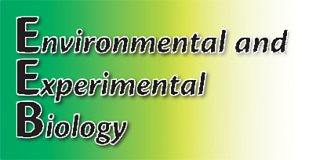
On-line: ISSN 2255–9582

| Faculty of Biology, University of Latvia | ||||||

|
Hard copy: ISSN 1691–8088
On-line: ISSN 2255–9582 Environ Exp Biol (2016) 14: 107–111
|
|||||

|
About the Journal | Retractions | Open Access | Author Guidlines | Current Issue | Archive |
|
Environmental and Experimental Biology |
Environ Exp Biol (2016) 14: 107–111 |
The diet composition of breeding Ospreys (Pandion haliaetus) was studied in several location in Latvia from 2009 to 2015 by determining food remain, intact or partly eaten fish in the nests, and photo and video materials from surveillance cameras that were set up at 14 nests. During the study period, information about 1501 Osprey prey specimens was collected from 119 nests and they were all fish. In total, 15 fish species were identified in Osprey diet, of which the most numerous was common carp (Cyprinus carpio), representing 47.2% of the diet, followed by tench (Tinca tinca) 14.3% and Prussian carp (Carassius gibelio) 11.3%, which was not found in studies conducted in other countries. The mean size of all mesured fish was 27.8 cm and corresponding weight was 368 g. Predatory fish (pike Esox lucius, perch Perca fluviatilis) represented only 4.7% of the whole diet. Osprey diet composition in Latvia showed that the population highly relies on fishponds.